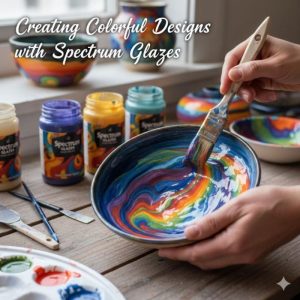For the dedicated fly angler, the craft of tying flies is as integral to the fishing experience as the act of casting a line. Using quality fly tying equipment is not merely a matter of preference but a vital factor that can dramatically influence the success of your fishing adventures. Superior tools and materials empower anglers to create more effective, durable, and visually appealing flies. Whether you’re a seasoned tier or new to the hobby, understanding the benefits of investing in top-notch equipment can truly elevate your craft. Keep reading to learn how superior fly tying gear can enhance every aspect of your fly fishing experience.
The Impact of High-Quality Fly Tying Equipment on Your Fishing Success
Quality fly tying tools are the backbone of successful fly creation. Sharp, reliable instruments make detailed work easier, helping patterns look more natural and perform better in the water. Using premium materials like strong threads, durable hooks, and resilient tinsel ensures flies hold up through repeated casts and strikes, saving time and frustration.
Investing in top-tier gear, such as that offered by J. Stockard, also enhances efficiency and consistency at the tying bench. Beyond durability, great tools build confidence and deepen your connection to the craft, allowing you to create flies that not only rival store-bought options but also reflect your personal style and skill.
Essential Fly Tying Tools for the Avid Angler
An avid fly tier relies on a range of specialized tools, each serving a unique purpose in the craft. Vises secure the hook for stability, while precision scissors ensure clean, accurate cuts. Bobbins help dispense thread evenly, and hackle pliers hold feathers firmly without damage, contributing to a polished finish.
Dubbing needles tease out fibers for a natural appearance, and finishing tools like whip finishers and knot tyers secure the fly in place. Organization also plays a key role, with customized cases or workstation organizers keeping tools protected and accessible. Selecting high-quality, comfortable tools enhances both efficiency and the overall tying experience, transforming raw materials into lifelike patterns.
Material Matters: Choosing the Right Supplies for Fly Tying
Fly tying involves selecting from a wide range of materials, including hooks, threads, feathers, furs, beads, and synthetics, each contributing to both function and appearance. Natural materials like hackle feathers and fur dubbing add lifelike movement and texture, while precision-made hooks improve penetration and hold.
Strong, versatile threads in various colors and diameters help create durable bodies that withstand fishing conditions. High-quality supplies do not always require excessive spending, as reputable sources such as J. Stockard provide premium options at reasonable prices. The choice of materials also depends on fishing conditions and targeted species, with heavier hooks and robust threads suited for larger fish and finer options for delicate patterns.
The Art of Fly Tying: How Superior Tools Can Enhance Creativity
Fly tying is an art that thrives on creativity, and superior tools play a vital role in unlocking that potential. A steady vise allows tiers to focus on design rather than stabilizing materials, while sharp scissors enable clean cuts and delicate shaping. Specialized tweezers and pickers make it easier to handle fine details, encouraging experimentation and precision.
The tactile feedback of quality tools enhances the experience, inspiring tiers to refine techniques and explore new patterns. For beginners, reliable equipment simplifies learning and builds confidence, while seasoned artisans gain the freedom to push creative boundaries. Investing in high-quality tools elevates both craftsmanship and personal growth in the fly tying journey.
Investing in Your Fly Tying Hobby: When to Splurge on Equipment
When deciding when to invest in high-quality fly tying equipment, several factors come into play, such as commitment to the hobby, budget, and long-term goals. Beginners may benefit from starting with a basic set of reliable essentials and upgrading gradually as their skills and interest develop.
As proficiency grows, many tiers identify specific areas where premium tools make a noticeable difference, like upgrading to a superior vise or investing in high-grade hackles for more realistic flies. Some situations justify spending more due to durability, with stainless steel tools offering consistent performance and fewer replacements. Beyond practicality, well-crafted tools can enhance enjoyment and inspire more time at the tying bench.
Overall, the journey into fly tying is deeply enriched by the tools and materials with which you choose to engage. By investing in quality equipment, you stand to gain in terms of efficiency, creativity, catch rate, and sheer pleasure from the craft. Whether you’re filling a box with tried-and-true patterns or experimenting with innovative designs, quality fly tying equipment is undoubtedly a cut above the rest.






